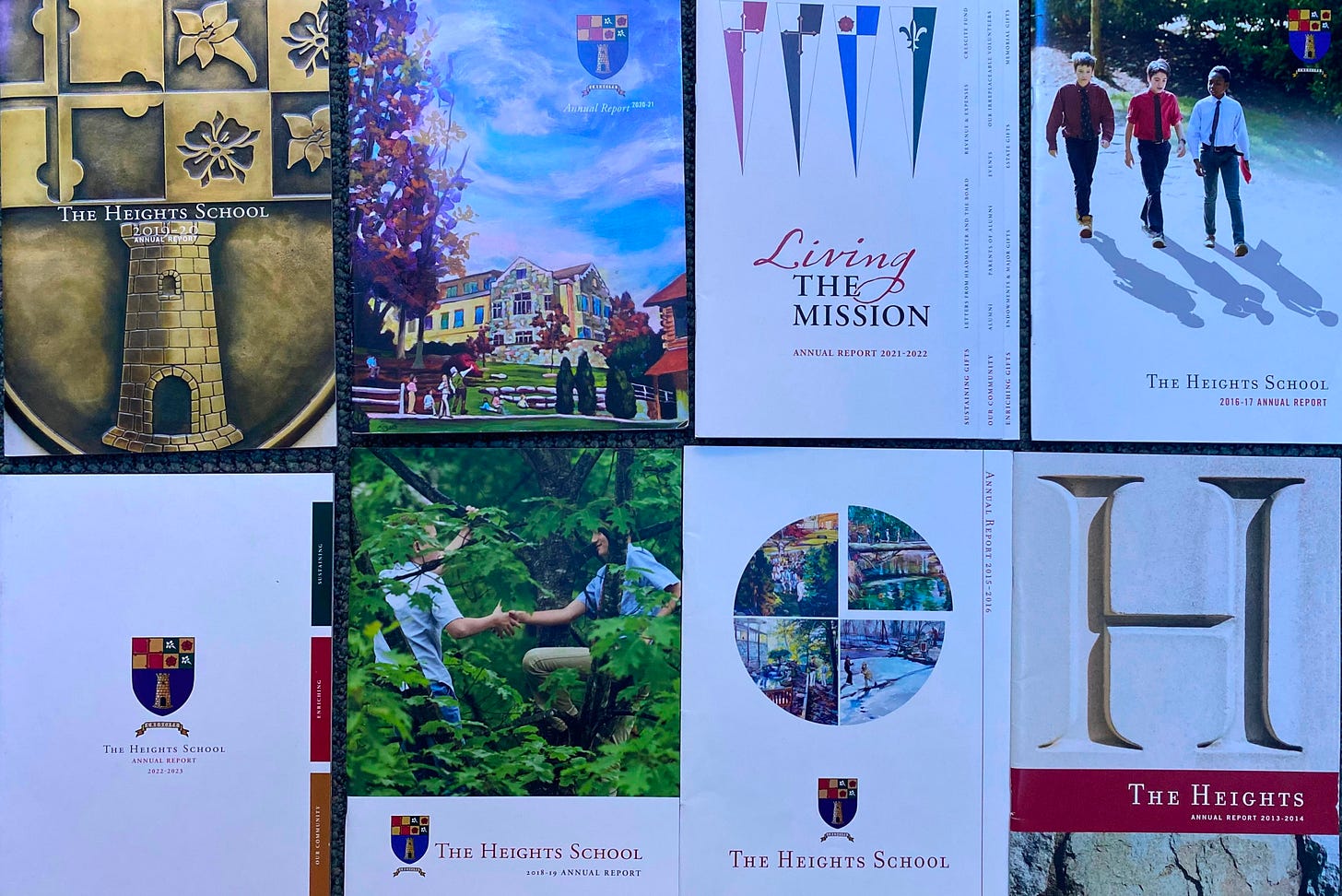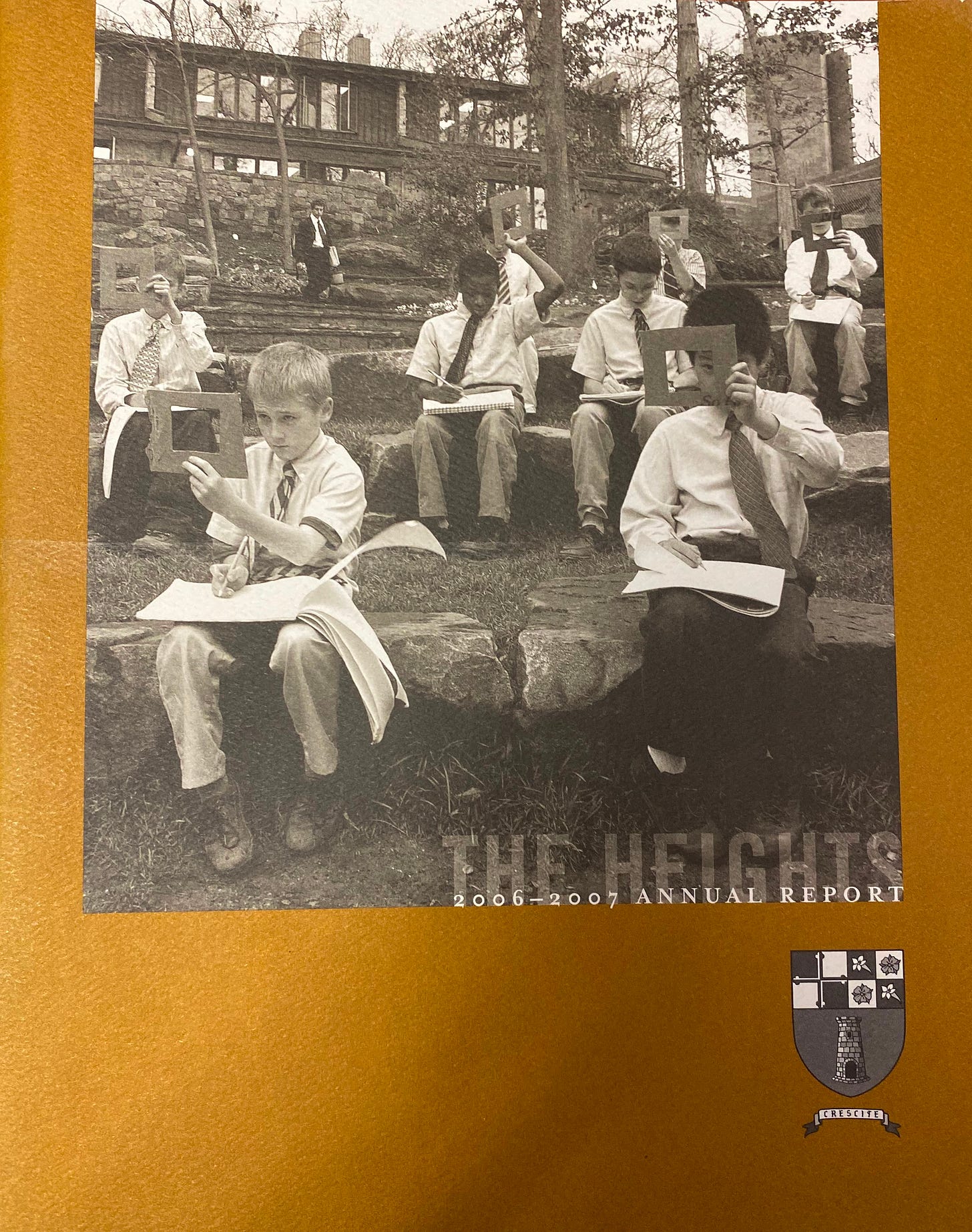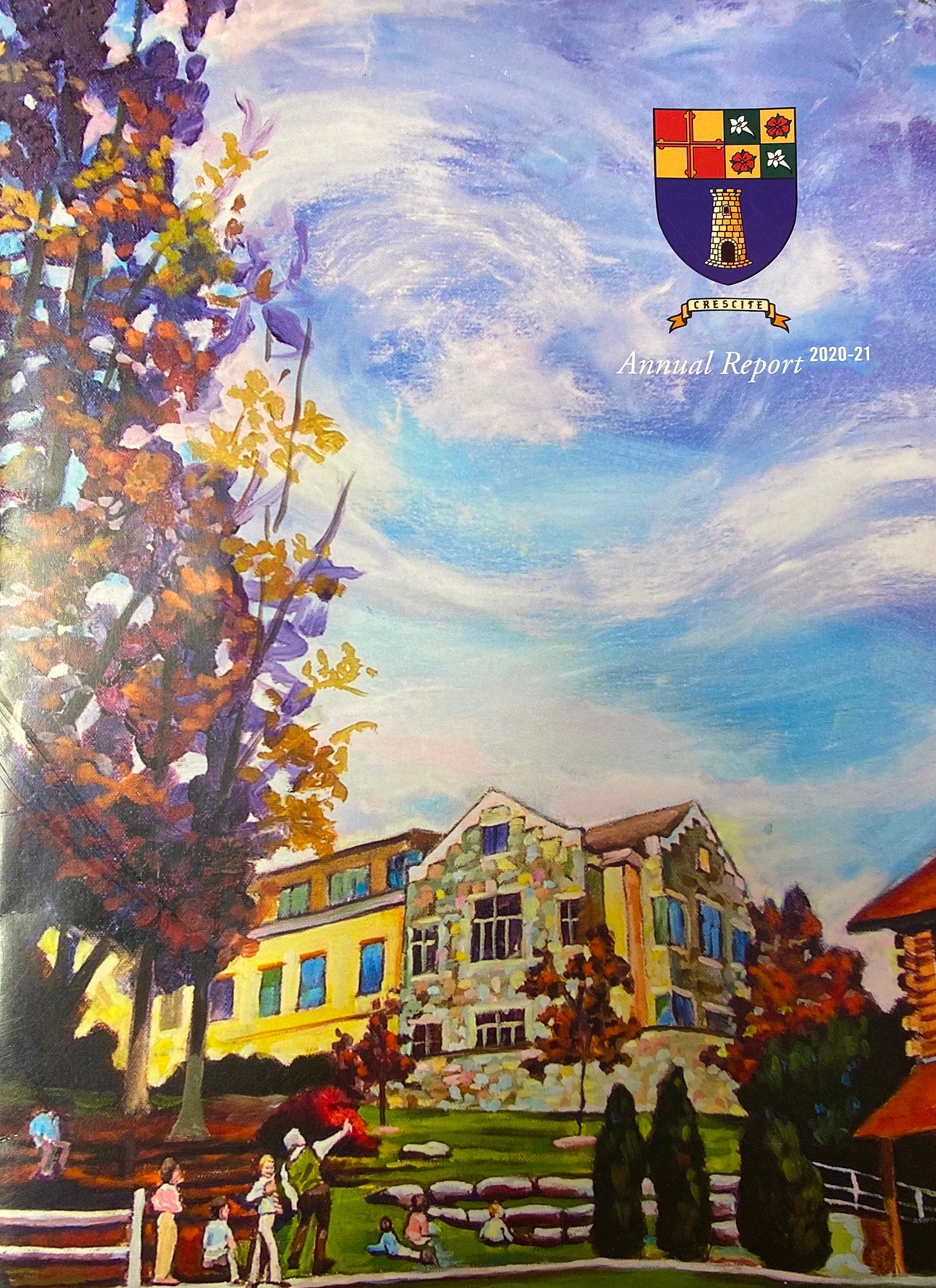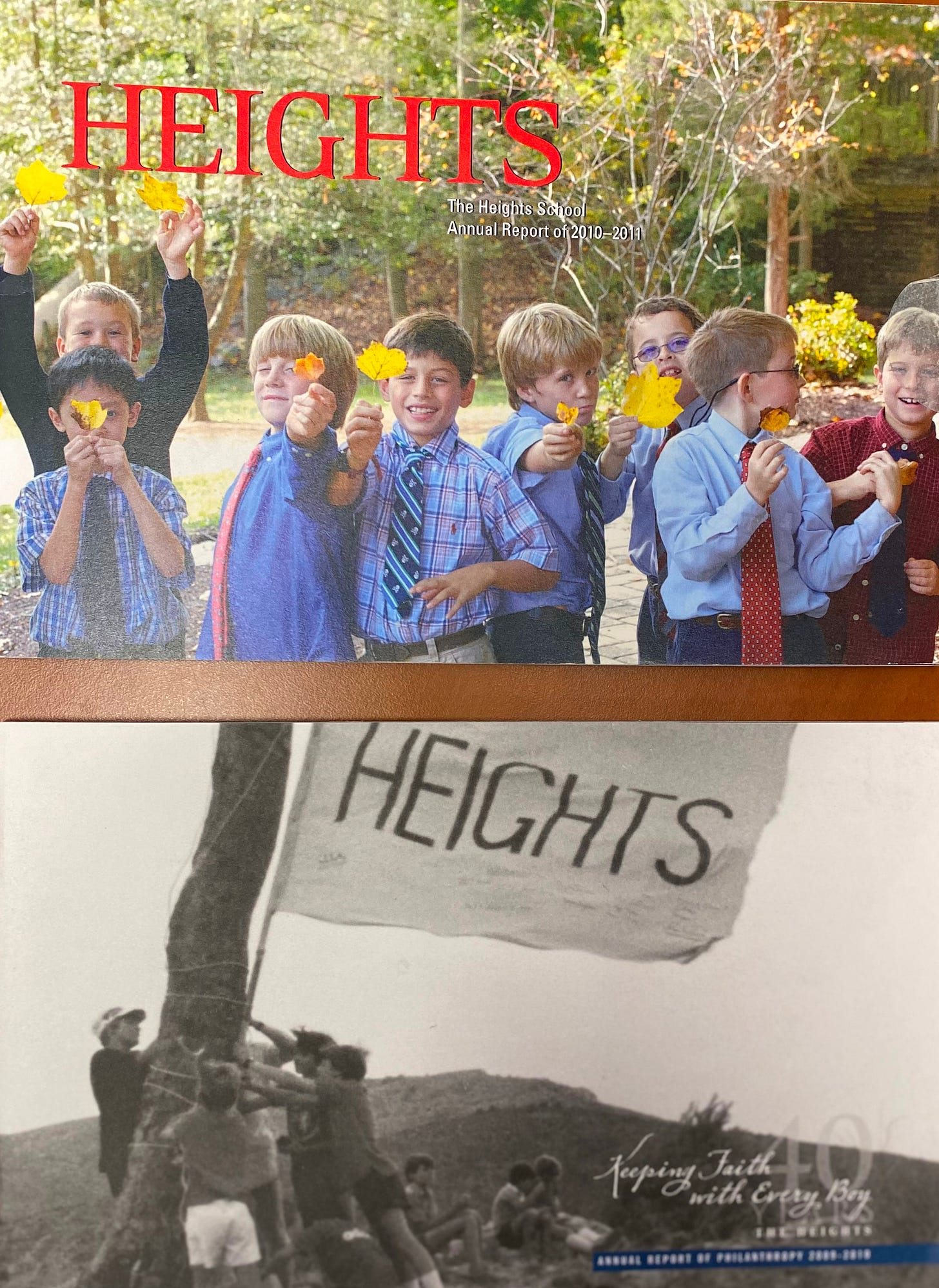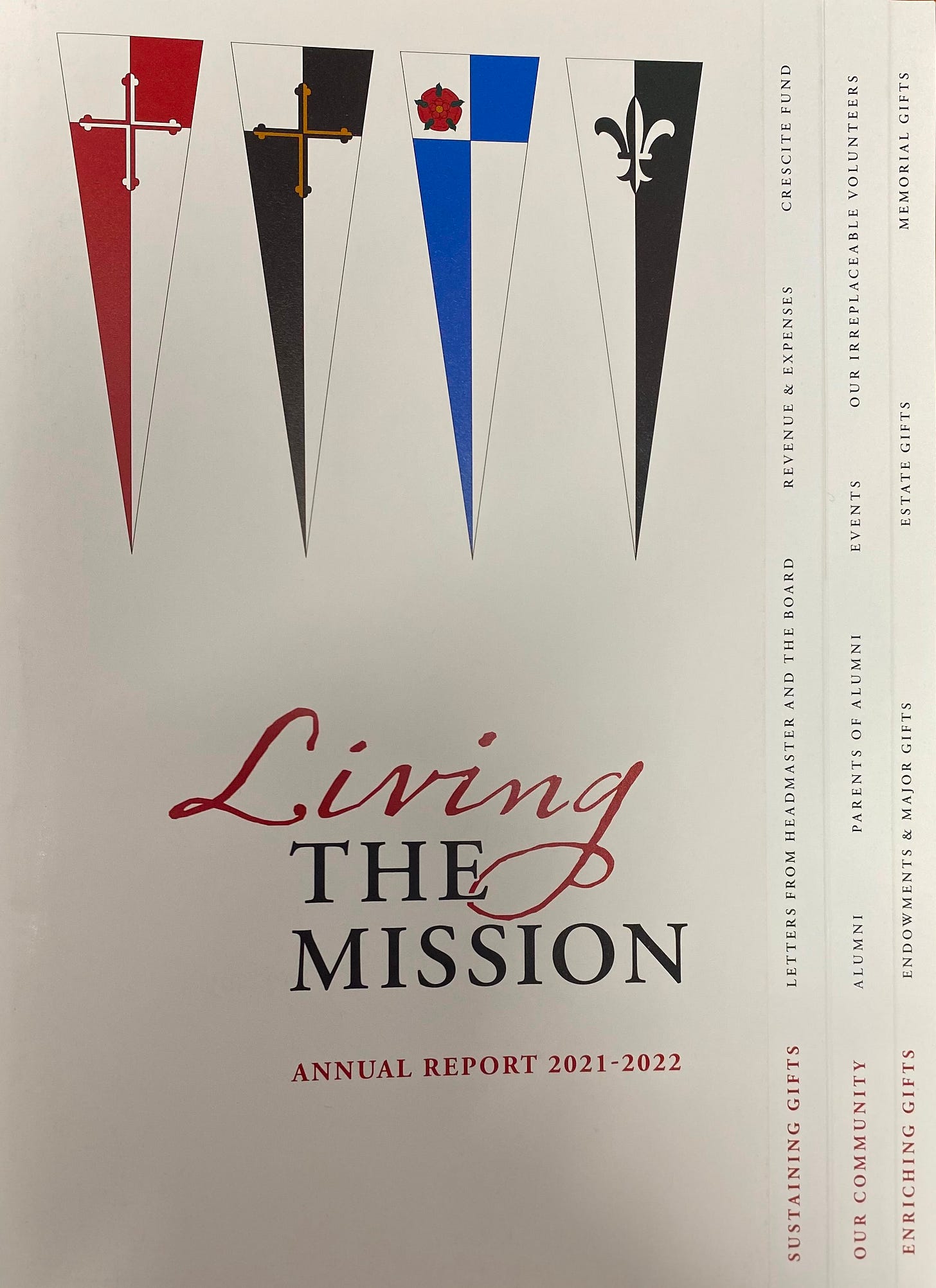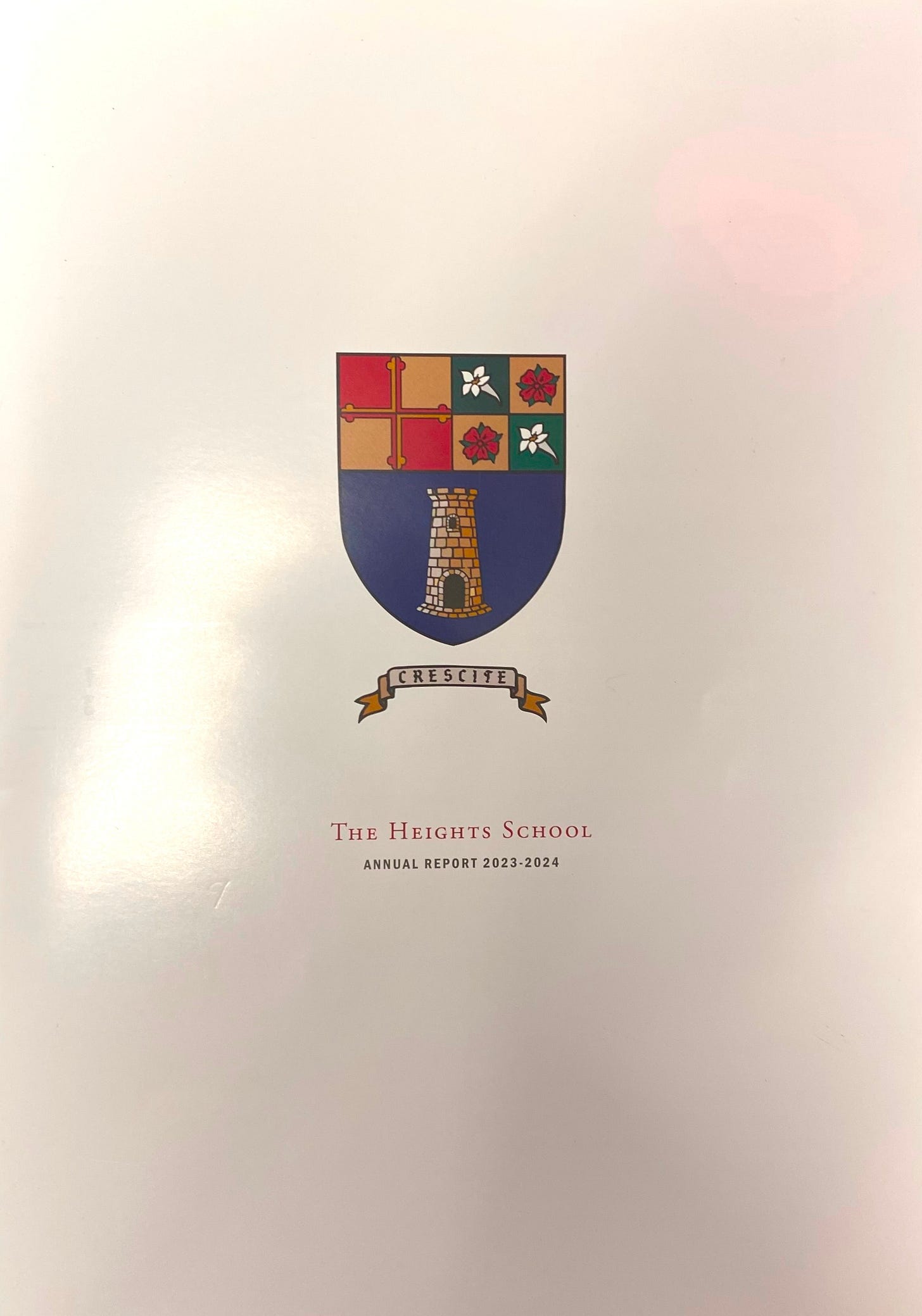The Elements of an Annual Report
An overview of annual report essentials.
Among the responsibilities I assumed when I began directing my school’s annual fund, one of the more interesting ones was publishing an annual report. Here I’ll lay out the basic elements of an annual report, along with a few comments on where you can stretch your creativity to make your report unique and engaging.
Article Outline
The Purpose of an Annual Report
Report Essentials
Length
Preparation
Don’t be Boring!
The Purpose of an Annual Report
One of the primary functions of an annual report, as the name suggests, is to report on the revenue and expenses of the past year. While not a legal requirement, publishing a comprehensive annual report is highly recommended for demonstrating mission advancement, fostering donor relationships, and showcasing institutional transparency and strength. These reports go beyond the Form 990 (which is a legal requirement) by providing a more engaging overview of the organization's achievements and financial health for supporters, potential donors, and volunteers.
Which is to say, half of the report’s purpose is to report, and the other half is to promote. The report should both relay important information while also providing enthusiasm for the year ahead.
As a brief aside, my school launched its annual report many years ago during a period of transition between school heads. In this case the report was used to bolster institutional stability at a time of uncertainty. The report included notes from the Board Chairman and the Head of School updating the community on recent and future projects and used clear numbers and long lists of names to highlight community support. Even if the overall tallies were not particularly high at the time, the novelty and quality of the document itself communicated strength and helped to ease concerned parents and alumni about the future of the school. Simply put, an annual report can do so much more than simply state facts.
For most schools, the annual report is a yearly fixture and serves to showcase the past year’s results while also soft launching the new year’s campaigns (The Elements of an Annual Fund).
Report Essentials
The contents you choose to highlight will reinforce what you hope to communicate in your report. However, I’ve found a few elements to be rather standard.
Board of Directors
Board members are often unknown and perceived as mysterious to the community. Listing them in a prominent place can help to make them more recognized and the school’s governance structure more apparent. Further, since they are uncompensated for their work this can make a nice touch of stewardship.
Mission Statement
Highlighting the school’s mission statement is a succinct way of reminding the community why they support your organization.
Note from the Head of School and/or Board Chair
A note from the school head serves as a nice introduction to the report and can be used to call attention to any noteworthy items in the report. This is also one of the best places to express gratitude on behalf of the school.
Yearly Revenue & Expenses
For most readers this is the real meat and potatoes of the report, even if expressed in just two simple pie charts. Work with your business manager to find the most representative ways of showing how money was spent. These numbers can be expressed as either percentages or dollar amounts. Here are some categories to consider:
Revenue
Tuition
Student Services & Programs
Fundraising & Events
Endowment Income
Other
Expenses
Student Programming
Building and Grounds
Administration
Debt Service
The Annual Fund
Since the annual fund is the primary means of fundraising for most schools, it will be your biggest item to highlight. Group donors by giving tiers (which can be fun to name!) in one of the most prominent locations in the report.
Alumni Donors
As alumni play an important role in institutional stability, it can be good to segment alumni into their own section in the report. Yes, this is redundant, but it helps to emphasize their support. List alumni alphabetically, by class, by giving amount, or by percentage of support to show their impact. This is also a good place to include a note from the alumni director about the year. The alumni director might also share a few giving statistics or noteworthy updates.
Parents of Alumni
Like alumni, the parents of alumni play an important role in mature organizations. If you’re so blessed, consider a PAL’s only section similar to the section for alumni.
Major Gifts
Much more can be said about major or endowment gifts, but here it is sufficient to note that they should be included in the report with care. Sharing these gifts is encouraging to the community and serves as a point of stewardship for these munificent donors.
Events
Since events play such an important role in most schools (and may reluctantly serve as the primary means of fundraising) a separate section for events is a good idea. This section can remind readers of the event (date, location, theme, chairperson, etc.) along with a list of sponsors and volunteers. This section can also go a long way toward increasing interest in next year's event.
List of Volunteers
In addition to event volunteers, naming volunteers to other initiatives, such as the Mother’s Club or the Father’s Club, can provide due recognition for their help in contributing to the school’s culture outside of monetary donations. Much would be missing from our schools without enthusiastic volunteers!
Memorial and Honorary Gifts
Lastly, acknowledging gifts made in memory of deceased members of the community or in honor of those who have made a significant impact is a great way to keep institutional memory front of mind. Larger schools might also use this section in tandem with a planned giving section.
Length
Report length will perhaps most influence what data you include and how you share it. I’ve seen one or two page digital reports as well as thick hard copy magazines resembling coffee table books. Either can be fine, depending on needs and budget.
But as a rule of thumb, the more names the better!
People like to see a community driven initiative. For this reason, donor names may be repeated: alumni names appearing in the alumni section may also be included in the general annual fund list, and perhaps in the parents of alumni section as well if applicable. This redundancy helps to show lots of donors, while also highlighting particular constituencies. The result is a very full report with lots and lots of names for people to enjoy browsing.
Length will also influence the amount of text and photos that are used.
Nota bene: Long paragraphs of text are rarely read. Photo captions are a stellar way of condensing a message that your reader, if nothing else, will read!
Try to avoid anything superfluous, such as simply filling one or two “leftover” pages with a collage of photos. Trim content to increase the importance of what is included, rather than simply filling space. Compact and good reports are much preferred over tedious affairs.
Preparation
How long does it take to produce an annual report?
It can take quite a while to cobble one together but how long exactly will depend on your individual goals and budget. I often begin thinking of report themes around mid April, taking into consideration the most important elements of the current year and what priorities are on the horizon for the year ahead. Once the year ends and final budgetary numbers are ready, it’s off to the races. Here is a rough breakdown of a typical preparation schedule:
April/May: Begin considering report themes or critical elements.
Early July: Once accounts are settled for the previous year, gather lists of donors,
photos, and report copy.
July/August: Begin report layout.
August: Edit report.
August/September: Compile report mailing list.
September: Finalize report and send to the printer.
October 1: Report hits mailboxes.
Perhaps the most lengthy part of creating an annual report is the editing process. Like measuring a coast line, the closer you focus on the details the more edits arise. It is not uncommon to go through fifteen or more rounds of edits before a final draft is ready. Why? No one wants to see their name misspelled, listed incorrectly, or even worse, forgotten from the report altogether!
Because the annual report communicates institutional stability, it is important that there be as few errors as possible. Double inspect pictures for resolution and content (any funny business going on in the background?), check for backward apostrophes on alumni years, is there a consistent use of school colors, crests, insignia?
What is more, report preparation might also require having strategic conversations with the development team about what, why, and how certain elements are included or excluded (such as major gifts), which can take additional time to sort through.
Don’t be Boring!
Regardless of length or medium you choose, your report should be high in substance, enjoyable to read, or at the very least, beautiful to look at.
Since your report will likely come out in the fall, it is the first talking point for the new campaign year. Last year’s campaign is over and people are now ready to hear about the next great thing. Here’s your chance to grab their attention.
Try to hone in on one topic throughout the report, such as a new brick and mortar project, the alumni community, the annual fund, major gifts, etc. Draw this topic out in as many ways as possible within the pages. Use pictures that complement your topic and put your school in the best light possible (pro tip: pictures should generally show people, not things!). Adjust the layout every few years, try experimenting with paper textures, booklet size, photo proportions, content organization. Small changes like this can be a great way of keeping your community engaged in supporting your mission, even if the content itself remains relatively static.
Here are a few examples of different report styles:
Rough Texture
Before bright glossy brochures were in vogue, heavy, textured, paper was considered the most polished and professional. As trends tend to ebb and flow, it seems that this style is coming back into fashion.
No Photos
Due to a lack of photos (or photos without facemasks!) during our Covid year, I created an annual report using only artwork composed by faculty and students.
Unusual Dimensions
A predecessor of mine drew attention to the annual fund by producing two reports in unusual dimensions (6.5 x 9). We had fewer donors to list, but this report was catchy and readable.
Tabs, tabs, tabs
Hoping to organize our report a bit better, I drove our designer crazy by creating a report using three layers of tabs to separate each section. We did not repeat this design again.
“Plain”
Of course, there is nothing wrong with a “plain” report that simply conveys your gratitude and mission.
Your report doesn’t have to be the same, or different, every year. What’s important is that you thank your donors for their generosity and help them to see all the great ways your school helps their children.
Of course, much more can be said about annual reports. Please let me know if you would like to talk more or have any questions. Connect with me on LinkedIn to continue the conversation.


